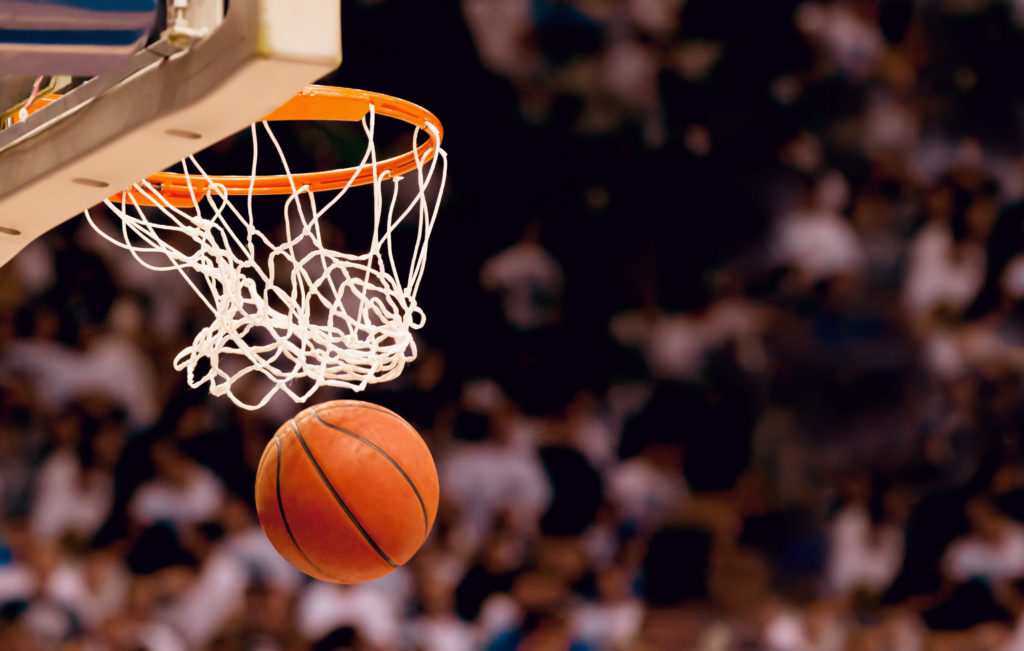
Jim knew when it was time to take his shot and slam dunk hip pain forever!
Jim knew when it was time to take his shot and slam dunk hip pain forever! https://hip-replacement.info/wp-content/uploads/2020/06/basketball-after-hip-replacement-surgery-1024x651.jpg 1024 651 HRI Admin HRI Admin https://secure.gravatar.com/avatar/762e6fcbd156c344827e230d9f5a90e35bb5a2696336f6e0f11effdf67686571?s=96&d=mm&r=gAccording to the American Golf Association there are around eight million rounds of golf played in Arizona every year by five hundred thousand Arizonans and seven hundred thousand visitors. Jim knew if he didn’t do something about his hip, he wasn’t going to be one of them.
Sports are a big part of Jim’s life. In addition to golf he enjoys tennis, basketball, and snow skiing. He makes his living broadcasting and talking on the radio about sports. (As it turns out, Jim was the guy they tapped to broadcast Michael Jordan’s first basketball game in 1984.) His hip pain began years before surgery. At first it was a nuisance. “Then all of a sudden I looked like a 114-year-old guy out on the golf course.” He could swing a tennis racket, but there was no way he could run to the ball. Skiing? Out of the question.
Jim recognized that without sports he wasn’t himself. And without hip replacement surgery he couldn’t play sports. After an x-ray showed bone on bone Jim did his research. He found the right surgeon, and they each agreed Jim was a good candidate for hip replacement surgery. It was time to get his life back.
Hip motion is a critical component of an effective golf swing. In the backswing your hips rotate 45 degrees. This is an important source of power, but also the hip rotation allows the shoulders to rotate an additional 45 degrees. If your hips don’t move normally you can’t get the club to the top of the swing. Professional players begin their downswing with a squatting motion that comes from the hips. The rotation of the hips forward completes the swing and transfers its power and momentum into the ball.
The rotation, squat, and follow through parts of the golf swing place tremendous pressure on the hip joints. Just consider walking, which is far less stressful on the hip than the golf swing. The pressure in the hip during light walking is 240 – 355% of body weight. Jogging increase pressure in the hip to 550% body weight. The golf swing likely results in at least six times your bodyweight in internal pressure. That kind of force will bring out any underlying problems with the hip joint, and potentially create new ones as well.
As an athlete Jim was concerned about his physical performance after surgery. “I know I’m an old guy, but I’m in shape for an old guy!” He was having surgery to return to sports. Traditional hip replacement surgery causes weakness in the hip joint that sometimes lasts years. It took 58-year-old Jack Nicholas 298 days to get back to golf after legacy hip replacement surgery in the 1980’s, and his game was never the same. Jim needed an alternative; so, he opted for minimally invasive hip replacement surgery.
The two main surgical approaches for minimally invasive hip replacement — SuperPATH and Anterior — are muscle sparing, don’t hurt as much, and have quicker recovery. But the best part to Jim was that they are so minimally invasive that minimally invasive hip replacement surgery can now be done in an ambulatory surgery center. Jim has been healthy his whole life and didn’t want to go anywhere near a hospital if he could avoid it.
At work Jim isn’t afraid to talk in front of hundreds of thousands of people at the same time but walking through the door at the ambulator surgery center he was “scared *!&%less.” Meeting with his surgeon, nurses, and the nurse anesthetist put him right at ease. He remembers sitting on the chair in the operating room for his spinal anesthetic, and that’s it. The surgery took less than an hour. No pain. No complications. As planned, Jim walked out of the ambulatory surgery center a few hours after he walked in with a new hip joint.
Jim used his walker and some medications for two days at home then ditched them both. As an athlete he knew how to listen to his body. He started chipping golf balls two weeks after surgery, driving at three, and played a full round of 18 holes about a month out from surgery. Jim is back. The only thing he can’t do is play tennis, because his other hip is also bad and needs to be replaced. This time he won’t wait to take his shot; he’s looking forward to it.
